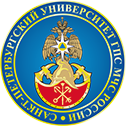Russian Federation
Russian Federation
Russian Federation
The article is devoted to solving the urgent problem of reducing the risk of extreme tourism. Currently, there is a contradiction between the increasing popularity of extreme tourism and the real risk for extreme tourists. The purpose of the work is a model that can be used to assess the risk of death and injury to tourists during extreme hikes. In the case of a risky situation, the damage can be calculated for the tourist, for the insurance company and for the state as a whole. The article solves the problem of estimating the expected amount of damage caused to the state. In the case of the death of a tourist, the damage to the state is determined by the amount of the lost gross domestic product as a result of premature disability, in the case of injury – temporary (for the duration of treatment) disability. In addition, the cost of search and rescue operations is added to the amount of damage to the State. The methods of mathematical statistics are used to estimate the amount of damage in the article. The initial data required for calculations are taken from the materials of the National crisis management center of EMERCOM of Russia from the reference books of Rosstat and other sources. The model under consideration consists of three blocks: an estimate of the loss of gross domestic product in the event of death of a tourist; an estimate of losses in the event of injury to a tourist; an estimate of the total losses from injury and death of tourists over an estimated period of time (calendar year). The analysis of the calculation results allowed us to obtain the amount of damage caused by the death and injury of tourists in registered and unregistered groups, in respect of which search and rescue operations were carried out, and to conclude that the total damage from death significantly exceeds the damage from injury, despite the fact that the number of cases of injury to tourists is much greater than the death.
harm, gross domestic product, death, costs, average dynamics method, accident, loss, risk, injury, tourist, damage, extreme recreation, extreme tourism
1. Bek U. Obshchestvo riska. Na puti k drugomu modernu: per. s nem. V. Sidel'nika, N. Fedorovoj. M.: Progress-Tradiciya, 2000. 384 s.
2. Strategicheskie riski Rossii. Ocenka i prognoz: monografiya / pod obshch. red. Yu.L. Vorob"eva. M.: Delovoj ekspress, 2005. 392 s.
3. Aktual'nye voprosy obespecheniya bezopasnosti turistskoj deyatel'nosti / I.Yu. Oltyan [i dr.]. M.: FGBU VNII GOCHS (FC), 2012. 124 s.
4. Yacucenko V.N., Voroncov S.V., Zavodskov G.N. Aktual'nye problemy obespecheniya bezopasnosti ekstremal'nogo turizma i konstruktivnye podhody k ih resheniyu // Problemy upravleniya riskami v tekhnosfere. 2024. № 1 (69). S. 8–24.
5. Akimova M.A., Ruban D.A. Ekstremal'nyj turizm: sovershenstvovanie klassifikacii // Geograficheskij vestnik. 2016. № 1. S. 95–103.
6. Babkin A.V. Special'nye vidy turizma. Rostov n/D: Feniks, 2008. 252 s.
7. Andreeva Yu.Yu. Naibolee populyarnye vidy sportivnogo i ekstremal'nogo turizma: obzor // Sovremennye problemy servisa i turizma. 2009. № 1. S. 47–53.
8. Gaydukevich L.M. Security problems in international tourism // Journal of the Belarusian State University. International Relations. 2017. № 1. P. 28–35.
9. Tukhliev N. Some Principles and Characteristics of safety in tourism // Economics and education. 2023. № 24 (2). P. 354–358.
10. Rausser G., Strielkowsk W., Korneeva E. Sustainable tourism in the digital age: institutional and economic implications // Terra Economicus. 2021. № 19 (4). P. 141–159.
11. Spennemann D.H.R. Extremal cultural tourism: From Antarctica to the Moon // Annals of Tourism Research. 2007. Vol. 34. P. 898–918.
12. Lucovic S., Stojkovic D. Covid-19 pandemic and global tourism // Hotel and Tourism Managenent. 2020. Vol. 8. № 2. P. 79–88.






